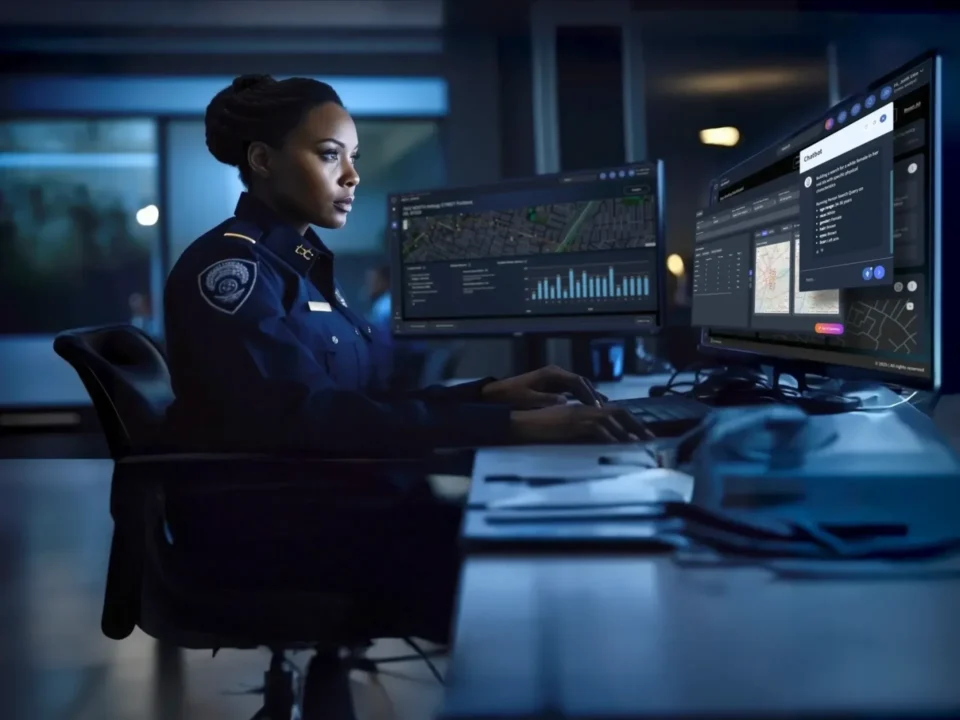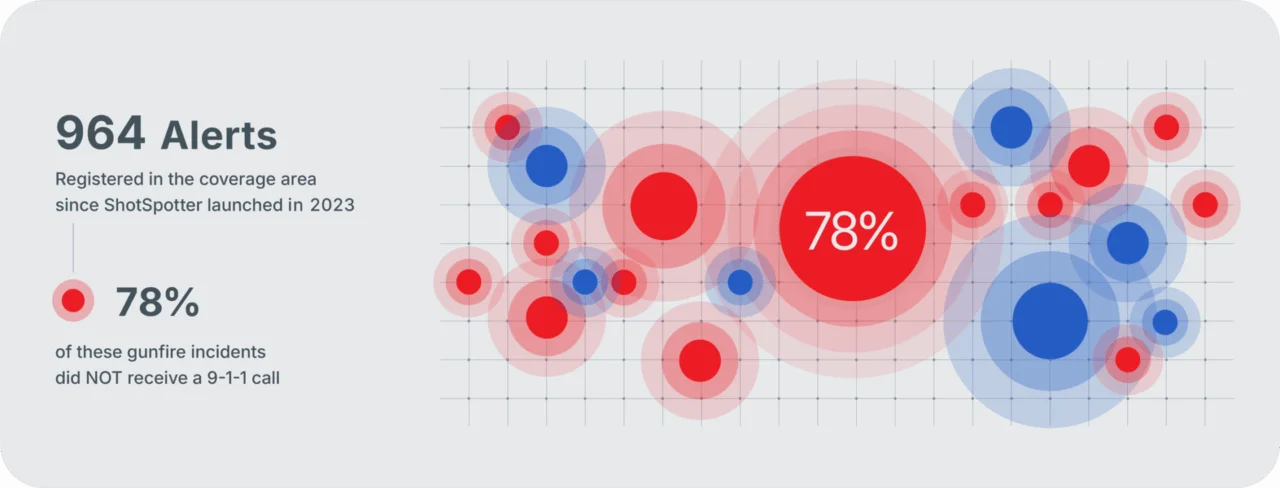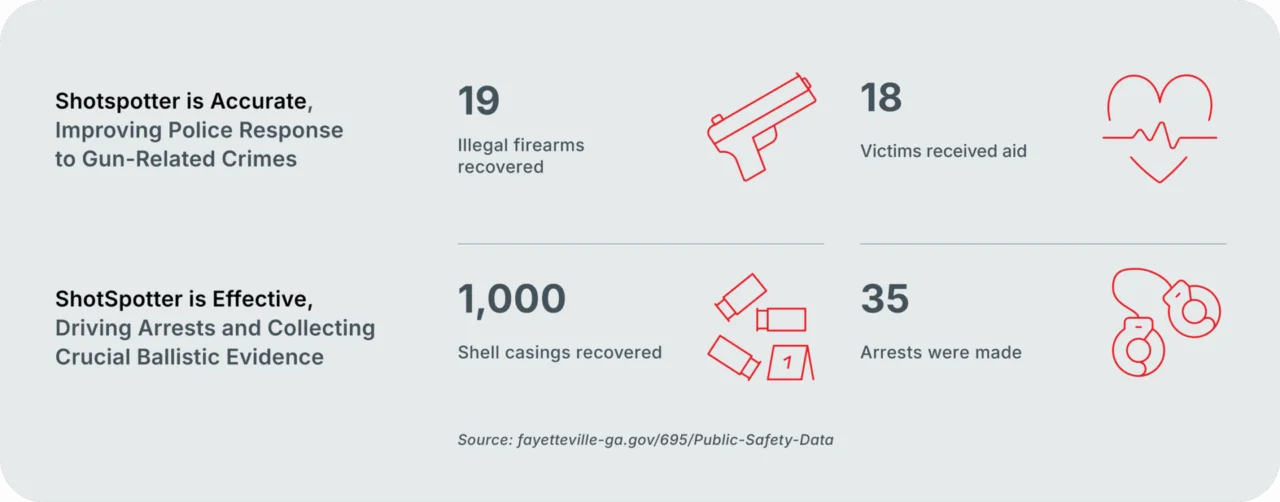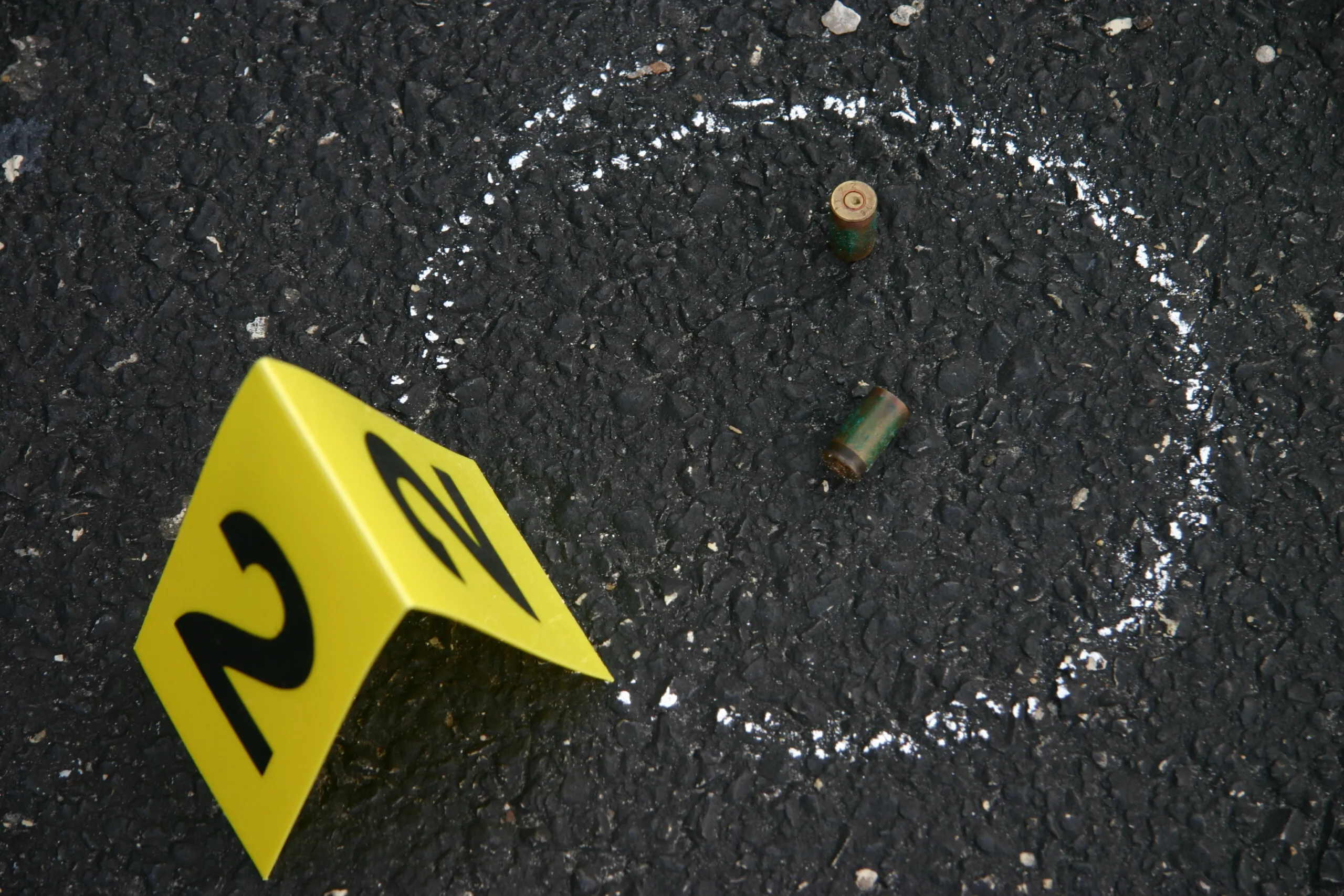The City of Fayetteville contracted the Wilson Center for Science and Justice at Duke Law to conduct an independent evaluation of the impact of the deployment of the ShotSpotter acoustic gunshot detection technology across three designated coverage zones in Campbellton, Central, and Cross Creek districts, covering roughly 3% of the City. The report examines the period from September 26, 2023, through March 31, 2025.
The report was published in August 2025.
The Duke Law Wilson Center study evaluating ShotSpotter in Fayetteville confirms what the technology is designed to do: deliver faster, more precise responses to criminal gunfire compared to 911 alone.
- While the study acknowledged shorter police response times, some of its conclusions require additional context. According to the evaluation, the data suggest that ShotSpotter has “not served as a deterrent to gunfire in the city.”
- SoundThinking does not, and has ever, claimed that ShotSpotter can unilaterally deter gunfire or gun violence more broadly, just as 911 does not deter crime nor fire detectors prevent fires.
- ShotSpotter’s primary purpose is to enhance public safety by enabling more rapid, precise law enforcement responses to criminal gunfire. This means detecting gunfire when it happens and providing alerts that facilitate the dispatch of police and first responders to the precise location quickly.
- It’s crucial to note that approximately 80% of criminal gunfire goes unreported to 911. ShotSpotter fills that crucial gap, ensuring those incidents don’t go unnoticed.
- The report is silent on this fact.
- According to the Fayetteville Public Dashboard during this period, there were 964 ShotSpotter alerts in the coverage areas. 752 (78%) of these gunfire incidents did NOT receive a 911 call, highly consistent with national averages.
- Literally, this means 752 occurrences of gunfire that would have been unknown and invisible to Fayetteville Police and other first responders without ShotSpotter.
3. The report also unfortunately ignores evidence collection and confiscation of illegal weapons.
-
- Independent research shows that ShotSpotter alerts are 3 times more likely to turn up evidence vs. 911 calls.
- According to the Fayetteville Public Dashboard, during this period:
- 19 illegal firearms recovered
- 18 victims received aid
- 1000 shell casings were collected
- 35 arrests were made
- Importantly, the evaluation did find that Fayetteville Police officers were dispatched more than two minutes faster in response to ShotSpotter alerts than to 911 calls alone.
- Across the country, ShotSpotter has helped police locate gunshot wound victims faster, enabling quicker medical response and saving lives.
- The technology is not designed to eliminate the underlying causes of gun violence, but rather to play a vital role in reducing the immediate risks and harms of criminal gunfire.
- The evaluation asserted that a majority of ShotSpotter-only results in Fayetteville did not lead to confirmed gun-related incidents.
- Confirmation, in this context, is defined as the collection of physical tangible evidence, such as shell casings, weapons, or witness testimony, at the location of a ShotSpotter alert.
- A critical factual principle holds true in law enforcement and was wholly disregarded—that the absence of evidence of a shooting isn’t evidence of absence. In fact, many shootings in urban settings leave no physical evidence. Revolvers do not leave casings, and criminals rarely abandon guns at the scene.
- Importantly, courts have deemed ShotSpotter alerts to be credible evidence, and alerts provide law enforcement with precise details on the timing, location, and nature of possible gunfire. ShotSpotter alerts are digital evidence to gunfire, which can be and has been reviewed and audited by several courts and the state and federal level.
- As the Wilson Center noted, the data used in the study cannot establish whether unconfirmed alerts are false positives or genuine incidents where no recoverable evidence was found.
Methodological Concerns
911 Calls vs. ShotSpotter Alerts
- The study relied heavily on datasets from Fayetteville’s CAD (Computer-Aided Dispatch) system. While these provide detailed information on event timing and location, there are limitations in how certain fields (e.g., trigger time, publication time, address, latitude/longitude) are captured and standardized.
- Importantly, only “shots fired” calls are directly comparable to ShotSpotter alerts. The study notes that the broader firearm-related 911 dataset also included calls unrelated to gunfire (e.g., weapons complaints). Although researchers attempted to filter for gunshot-related calls, this may have introduced inconsistencies.
Confirmation of Gunfire
- The researchers did not have full access to tools that would allow a one-to-one correlation between ShotSpotter alerts and calls for service.
- As a result, proxies were used:
- For 911 calls, the presence of an OCA (incident) number was treated as an indicator that an event was confirmed.
- For ShotSpotter alerts, confirmation relied on whether officers reported evidence (casings, property damage, firearms, victims, etc.).
- This reliance on proxies means confirmation rates must be interpreted with caution.
Outcomes Tracking
- The study did not have access to full case-level investigative data linked to each call for service.
- This limitation prevented a direct comparison of outcomes (arrests, victim aid, evidence recovered) between ShotSpotter alerts and 911 calls.
- As a result, conclusions about productivity are incomplete — they reflect only ShotSpotter’s Ground Truth reporting, not equivalent data from 911 calls.
Zone Coverage & Boundaries
- For analysis, the researchers counted alerts up to 600 feet outside of the coverage zones as part of the nearest zone.
- Correction: ShotSpotter technology is capable of detecting gunfire slightly outside the formal coverage area, but the system typically maintains high accuracy within about 300 feet beyond the boundary. The study’s 600-foot buffer was a methodological decision, not a system feature.
In short, while the study confirms ShotSpotter delivers its core promise, it understates the broader impact due to methodological constraints. ShotSpotter ensures gunfire is detected, victims receive help, and law enforcement gains evidence that would otherwise be lost.






